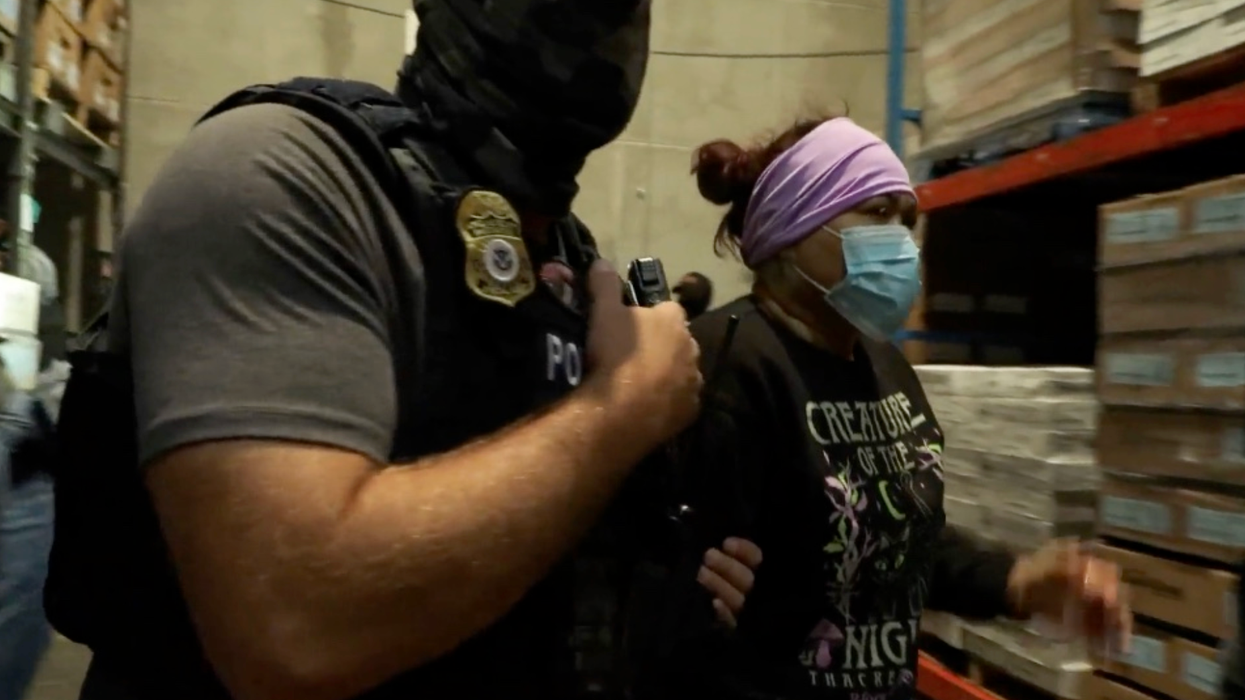You do not need to speak to be seen. The act of being online is enough. Every scroll, pause, and click is recorded, analyzed, and translated into behavioral data. Algorithms study not only what we share but what we read and ignore, and how long our eyes linger. Silence becomes signal, and absence becomes information. The watchers often need no warrant for public content or purchased metadata, only your connection. In this architecture of observation, even passivity is participation.
This did not happen all at once. It arrived through privacy impact assessments, procurement notices, and contracts that layered capability upon capability. The Department of Homeland Security (DHS) built watch centers to monitor incidents. Immigration and Customs Enforcement folded social content into investigative suites that already pull from commercial dossiers. Customs and Border Protection (CBP) linked open posts to location data bought from brokers. The FBI refined its triage flows for threats flagged by platforms. The Department of Defense and the National Security Agency fused foreign collection and information operations with real-time analytics.
Little of this resembles a traditional wiretap, yet the effect is broader because the systems harvest not just speech but the measurable traces of attention. Most of it rests on the claim that publicly available information is fair game. The law has not caught up with the scale or speed of the tools. The culture has not caught up either.
From Watchfulness to Watchlists
The next turn of the wheel is underway. Immigration and Customs Enforcement plans two round-the-clock social media hubs, one in Vermont and one in California, staffed by private contractors for continuous scanning and rapid referral to Enforcement and Removal Operations. The target turnaround for urgent leads is 30 minutes. That is not investigation after suspicion. That is suspicion manufactured at industrial speed. The new programs remain at the request-for-information stage, yet align with an unmistakable trend. Surveillance shifts from ad hoc to ambient, from a hand search to machine triage, from situational awareness to an enforcement pipeline that links a post to a doorstep.
The line between looking and profiling thins because the input is no longer just what we say but what our attention patterns imply.
Artificial intelligence makes the expansion feel inevitable. Algorithms digest millions of posts per hour. They perform sentiment analysis, entity extraction, facial matching, and network mapping. They learn from the telemetry that follows a user: time on page, scroll depth, replay of a clip, the cadence of a feed. They correlate a pseudonymous handle with a résumé, a family photo, and a travel record. Data brokers fill in addresses, vehicles, and associates. What once took weeks now takes minutes. Scale is the selling point. It is also the danger. Misclassification travels as fast as truth, and error at scale becomes a kind of policy.
George Orwell warned that “to see what is in front of one’s nose needs a constant struggle.” The struggle today is to see how platform design, optimized for engagement, creates the very data that fuels surveillance. Engagement generates signals, signals invite monitoring, and monitoring, once normalized, reshapes speech and behavior. A feed that measures both speech and engagement patterns maps our concerns as readily as our views.
The Circle Tightens
Defenders of the current model say agencies only view public content. That reassurance misses the point. Public is not the same as harmless. Aggregation transforms meaning. When the government buys location histories from data brokers, then overlays them with social content, it tracks lives without ever crossing a courthouse threshold. CBP has done so with products like Venntel and Babel Street, as documented in privacy assessments and Freedom of Information Act releases. A phone that appears at a protest can be matched to a home, a workplace, a network of friends, and an online persona that vents frustration in a late-night post. Add behavioral traces from passive use, where someone lingers and what they never click, and the portrait grows intimate enough to feel like surveillance inside the mind.
The FBI’s posture has evolved as well, particularly after January 6. Government Accountability Office reviews describe changes to how the bureau receives and acts on platform tips, along with persistent questions about the balance between public safety and overreach. The lesson is not that monitoring never helps. The lesson is that systems built for crisis have a way of becoming permanent, especially when they are fed by constant behavioral data that never stops arriving. Permanence demands stronger rules than we currently have.
Meanwhile, the DHS Privacy Office continues to publish assessments for publicly available social media monitoring and situational awareness. These documents describe scope and mitigations, and they reveal how far the concept has stretched. As geospatial, behavioral, and predictive analytics enter the toolkit, awareness becomes analysis, and analysis becomes anticipation. The line between looking and profiling thins because the input is no longer just what we say but what our attention patterns imply.
Speech Under Glass
The First Amendment restrains the state from punishing lawful speech. It does not prevent the state from watching speech at scale, nor does it account for the scoring of attention. That gap produces a chilling effect that is hard to measure yet easy to feel. People who believe they are watched temper their words and their reading. They avoid organizing, and they avoid reading what might be misunderstood. This is not melodrama. It is basic social psychology. Those who already live closer to the line feel the pressure first: immigrants, religious and ethnic minorities, journalists, activists. Because enforcement databases are not neutral, they reproduce historical biases unless aggressively corrected.
Error is not theoretical. Facial recognition has misidentified innocent people. Network analysis has flagged friends and relatives who shared nothing but proximity. A meme or a lyric, stripped of context, can be scored as a threat. Behavioral profiles amplify risk because passivity can be interpreted as intent when reduced to metrics. The human fail-safe does not always work because human judgment is shaped by the authority of data. When an algorithm says possible risk, the cost of ignoring it feels higher than the cost of quietly adding a name to a file. What begins as prudence ends as normalization. What begins as a passive trace ends as a profile.
The Law Lags, The Machine Leads
Fourth Amendment doctrine still leans on the idea that what we expose to the public is unprotected. That formulation collapses when the observer is a system that never forgets and draws inferences from attention as well as expression. Carpenter v. United States recognized a version of this problem for cell-site records, yet the holding has not been extended to the government purchase of similar data from brokers or to the bulk ingestion of content that individuals intend for limited audiences. First Amendment jurisprudence condemns overt retaliation against speakers. It has little to say about surveillance programs that corrode participation, including the act of reading, without ever bringing a case to court. Due process requires notice and an opportunity to contest. There is no notice when the flag is silent and the consequences are dispersed across a dozen small harms, each one deniable. There is no docket for the weight assigned to your pauses.
Wendell Phillips wrote, “Eternal vigilance is the price of liberty.” The line is often used to defend surveillance. It reads differently from the other side of the glass. The public must be vigilant about those who claim vigilance as a mandate without bounds. A republic cannot outsource its conscience to machines and contractors.
Do Not Stand Still
You cannot solve a policy failure with personal hygiene, but you can buy time. Treat every post as a public record that might be copied, scraped, and stored. Remove precise locations from images. Turn off facial tagging and minimize connections between accounts. Separate roles. If you organize, separate that work from family and professional identities with different emails, phone numbers, and sign ins. Use two-factor authentication everywhere. Prefer end-to-end encrypted tools like Signal for sensitive conversations. Scrub photo metadata before upload. Search your own name and handles in a private browser, then request removal from data-broker sites. Build a small circle that helps one another keep settings tight and recognize phishing and social engineering. These habits are not retreat. They are discipline.
The right to be unobserved is not a luxury. It is the quiet foundation of every other liberty.
Adopt the same care for reading as for posting. Log out when you can, block third-party trackers, limit platform time, and assume that dwell time and scroll depth are being recorded. Adjust feed settings to avoid autoplay and personalized tracking where possible. Use privacy-respecting browsers and extensions that reduce passive telemetry. Small frictions slow the flow of behavioral data that feeds automated suspicion.
Push outward as well. Read the transparency reports that platforms publish. They reveal how often governments request data and how often companies comply. Support groups that litigate and legislate for restraint, including the Electronic Frontier Foundation, the Brennan Center for Justice, and the Center for Democracy and Technology. Demand specific reforms: warrant requirements for government purchase of location and browsing data, public inventories of social media monitoring contracts and tools, independent audits of watch centers with accuracy and bias metrics, and accessible avenues for redress when the system gets it wrong. Insist on disclosure of passive telemetry collection and retention, not only subpoenas for content.
Reclaim the Public Square
The digital commons was built on a promise of connection. Surveillance bends that commons toward control. It does so quietly, through dashboards and metrics that reward extraction of both speech and attention. The remedy begins with naming what has happened, then insisting that the rules match the power of the tools. A healthy public sphere allows risk. It tolerates anger and error. It places human judgment above automated suspicion. It restores the burden of proof to the state. It recognizes that attention is speech by another name, and that freedom requires privacy in attention as well as privacy in voice.
You do not need to disappear to stay free. You need clarity, patience, and a stubborn loyalty to truth in a time that rewards distraction. The watchers will say the threat leaves no choice, that vigilance demands vision turned outward. History says freedom depends on the courage to look inward first. The digital world was built as a commons, a place to connect and create, yet it is becoming a hall of mirrors where every glance becomes a record and every silence a signal. Freedom will not survive by accident. It must be practiced—one mindful post, one untracked thought, one refusal to mistake visibility for worth. The right to be unobserved is not a luxury. It is the quiet foundation of every other liberty. Guard even the silence, for in the end it may be the only voice that still belongs to you.




